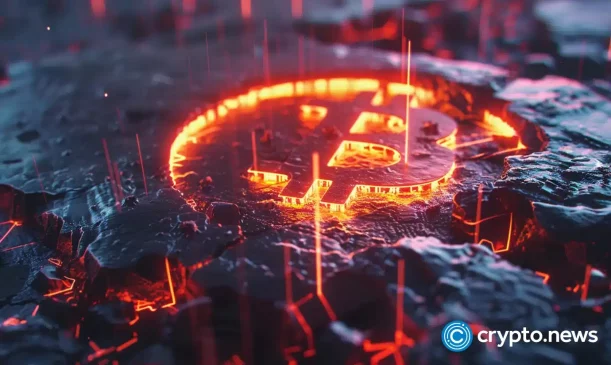Speaking to crypto.news in an interview, Andy Fajar Hardika, CEO of Loka Mining, discussed the evolution of decentralized finance (defi) on the Bitcoin network.
On April 19, 2024, Bitcoin mining rewards were slashed in half. Mining a block will now generate only 3.125 BTC, compared to the previous 6.25 BTC. Although the Bitcoin halving happens every four years or so this year, it’s really got industry participants talking about how the reduced rewards will affect the mining economy.
With each halving event, mining firms have to adapt to a lower-margin environment. Cash-strapped firms usually exit the market or merge with bigger firms. Unlike the earlier halving events in 2016 and 2020, the 2024 halving event may result in a slew of consolidation and defaults.
Enter Runes and Ordinals, concepts that are revolutionizing the defi landscape on the Bitcoin network.
Runes, like Ethereum’s ERC-20 standard, introduce fungible tokens to the Bitcoin blockchain, while Ordinals bring NFTs directly onto the network. As the premiere cryptocurrency, this goes a long way in broadening the possibilities of what Bitcoin can offer beyond simple transactions.
With Runes and Ordinals, Bitcoin is finding new ways to close the gap with Ethereum, which has largely been hailed as the king of defi. However, nothing is without its challenges. Scalability issues and concerns over blockchain bloat loom large, echoing past impediments in the industry.
Still, the birth of protocols like Runes and Ordinals shows that Bitcoin can support more diverse decentralized applications. Miners, in return, are able to offset the halving’s effect on revenue.
Hardika, who leads a cryptocurrency mining firm, shared his insights on the matter.
How do you perceive Bitcoin’s evolving role in the defi space, given its recent advances like the Runes protocol and the impact it’s had on miner revenues and transaction fees?
Bitcoin lacks programmability but has the strongest Lindy effect and has proven to become the de facto store of value. I personally believe these characteristics are driving Bitcoin to be the “mother chain,” attracting new protocols that are blooming on Bitcoin’s L2 or sidechain.
In your opinion, can Bitcoin position itself as a competitor to Ethereum in decentralized finance, or do you foresee a different outcome?
I think what we will see in the end is not rivalry, but rather collaboration — where chains will be “fused” and abstracted away to a point that regular users don’t really care or need to understand which chain they’re currently using.
With Runes driving transaction fees to new heights, how do you think Bitcoin can balance rewarding miners with keeping transactions affordable and accessible? Are high fees hindering Bitcoin’s adoption for smaller transactions?
As Bitcoin transitioned from a P2P e-cash system to a Store of Value, I believe the high transaction fee on Bitcoin L1 is important. It serves as a trade-off for the security budget the network needs to maintain. This is where L2s take part in scaling the network and adding programmability to Bitcoin. From a user’s perspective, solutions like Lightning or ICP with their ckBTC enable Bitcoin transaction fees to be reduced to just a few cents.
Historically, Bitcoin has lagged behind Ethereum in defi applications. How likely is it that innovations like Runes and Ordinals will help Bitcoin close this gap? What are Bitcoin’s advantages or challenges in this space?
Ordinals is basically fully on-chain NFT, parallel to ERC721, while Runes is essentially Fungible Tokens on Bitcoin, parallel to ERC-20. These are just early building blocks for Bitcoin programmability. While it’s now possible to build an L1 primitive dApp, it’s still very limited. I believe the actual use case would be like anchor points for the L2s to provide a full-blown defi app on Bitcoin. One significant advantage would be that we can unlock the massive Bitcoin TVL that is currently sitting in their holders’ wallets.
Some critics argue that protocols like Runes and Ordinals could lead to blockchain bloat and slower transaction times. What are your thoughts on these drawbacks, and how do they compare to Ethereum’s scalability challenges?
History tends to repeat itself. A few years back, we had CryptoKitties, the first gamified NFT on the Ethereum network, consuming 13% of all transactions in the Ethereum network. This ignited the discussion about network scalability and eventually sparked many upgrades and the rise of L2s on Ethereum.
Do you expect a similar trend?
I believe we see parallels between Runes and Ordinals, which are now taking significant block space and contributing a significant amount to the network’s security budget. As an indirect result, there are now more than 50 Bitcoin Layers or sidechains trying to solve Bitcoin’s scalability. And of course, just like startups, most of them will eventually die down or become dormant — but those with strong utility and actual use cases will survive.



